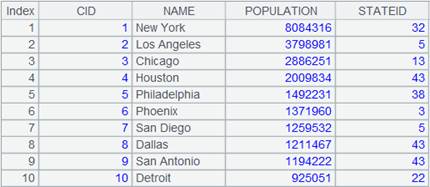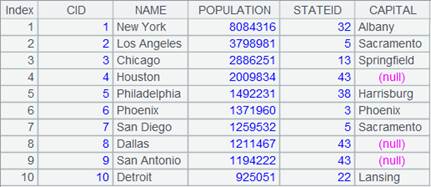json()
Description:
Parse a string, a record, a sequence or a table sequence of JSON format.
Syntax:
json(x)
Note:
If parameter x is a JSON string, the function parses it into a table sequence to return; if parameter x is a record, a sequence or a table sequence, the function parses it into a JSON string to return.
The format of JSON string is [{F:v,…},…], where v is the value of F and a string constant should be quoted.
Parameter:
|
x |
A JSON string/record/sequence |
Option:
|
@v |
Treat parameter x as an expression and calculate its result |
|
@t |
Arrange the returned result set as a same-structure table sequence |
Return value:
Record/Sequence/Table sequence/JSON string
Example:
Parse a JSON string as a table sequence and return it:
|
|
A |
|
|
1 |
=file("user.txt").read() |
Return a JSON string as follows:
|
|
2 |
=json(A1) |
Parse A1’s JSON string as a table sequence and return it:
|
Parse a table sequence as a JSON string and return it:
|
|
A |
|
|
1 |
=demo.query("select top 5 EID,NAME,SURNAME from EMPLOYEE") |
Return a table sequence:
|
|
2 |
=json(A1) |
Parse A1’s table sequence as a JSON string and return it:
|
When @v option works:
|
|
A |
|
|
1 |
="{number:rand(10)}" |
|
|
2 |
=json(A1) |
Return result as follows:
|
|
3 |
=json@v(A1) |
@v option works to treat rand(10) as an expression and compute it; and the function returns a number within 10 randomly. |
When @t option works:
|
|
A |
|
|
1 |
="[{ID:1,NAME:aa,GENDER:F},{GENDER:M,NAME:bb,ID:2}]" |
|
|
2 |
=json(A1) |
Return result as follows:
|
|
3 |
=json@t(A1) |
@t option works to arrange the result set as a same-structure table sequence:
|





